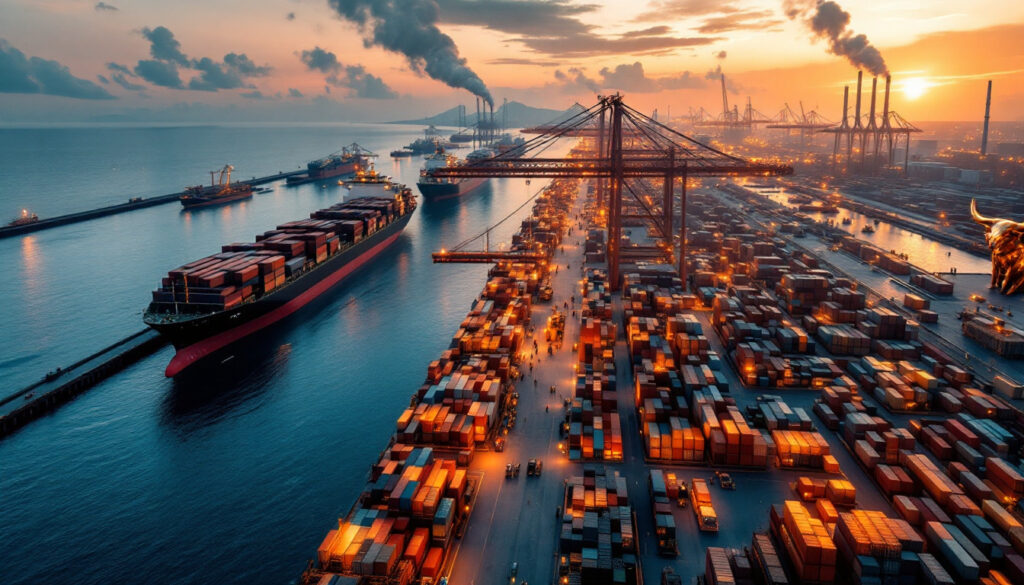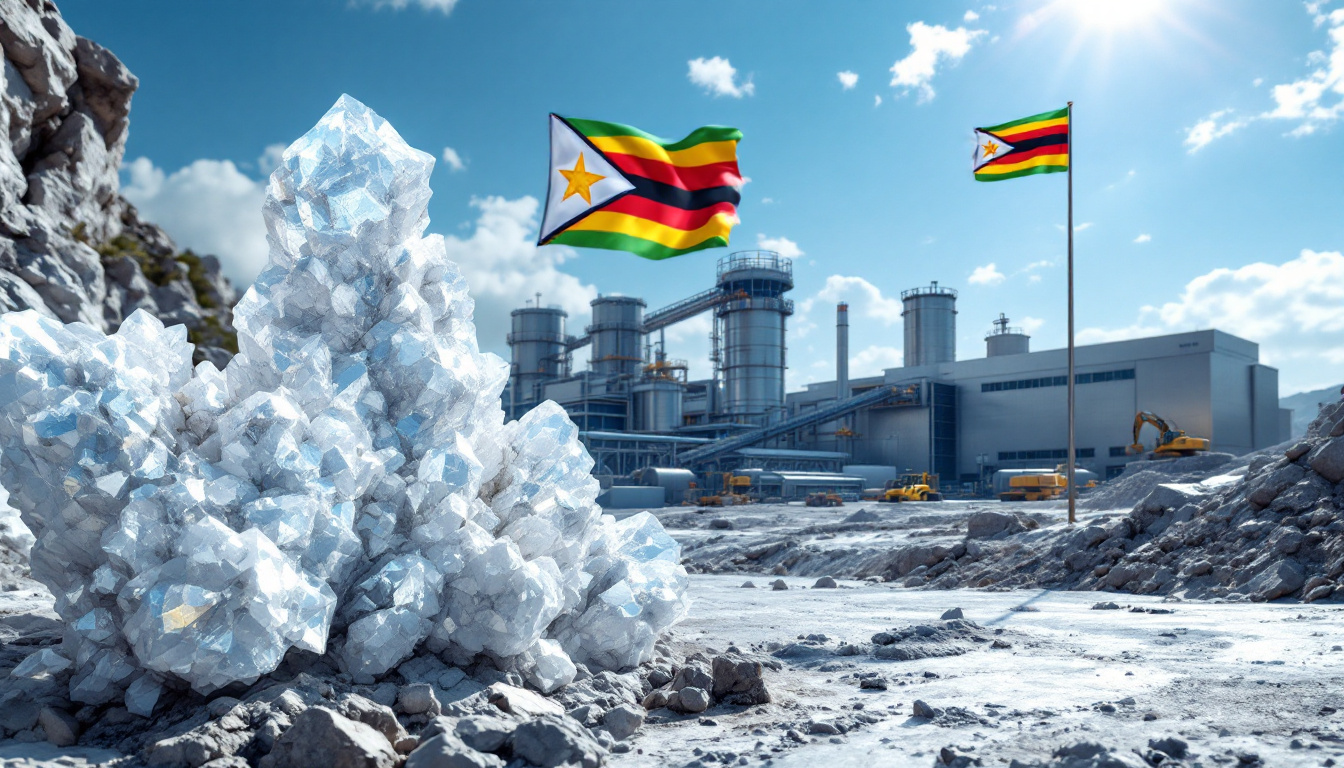## What is Driving the Copper Price Rally to $10,000?
Copper price hovers near $10,000 after rally driven by tariff fears has become the talk of the commodity market. Multiple factors have converged to create this notable surge. Furthermore, market analysts believe that the current scenario is a classic example of supply and demand dynamics at play.
The rally has been most pronounced on the Comex exchange. Copper prices have surged by an impressive 27% since the start of 2025. In addition, these gains outpaced the London Metal Exchange’s 14% rise during the same period. This divergence points to unique regional influences.
The weaker U.S. dollar has been a crucial catalyst. As a dollar-denominated commodity, copper benefits when the currency declines. Consequently, buyers using other currencies find the metal more affordable. Moreover, recent reports from record copper rise highlight how exchange rates are impacting global market trends.
Wei Lai from Zijin Mining explained that cargoes are being lured to the U.S., leaving shortages elsewhere. He noted, "Buying sentiment is very strong." This observation underscores how market psychology and logistical disruptions support the impressive momentum behind copper price hovers near $10,000 after rally driven by tariff fears.
## How Are Trump's Tariff Threats Impacting Copper Markets?
Former President Trump’s evolving trade policies have intensified market volatility. The directive for the Commerce Department to investigate copper imports has sown uncertainty across global supply chains. In addition, the proposed 25% import duty has spurred defensive positioning among traders and manufacturers.
For instance, Goldman Sachs and Citigroup forecast a possible 25% duty by the end of 2025. Consequently, U.S. manufacturers are hedging by adding premiums of approximately $150 per ton into forward contracts. Furthermore, this directive underlines the role of trump’s evolving trade policies in generating market ripples.
Investigators expect the Section 232 process to last 6-9 months, followed by a 90-day window for presidential decisions. As a result, the prolonged uncertainty has led to significant shifts in global copper flows, with traders realigning shipments to capitalise on price differentials.
Moreover, transshipment via Canada and Mexico increased in Q1 2025 by approximately 18%. Consequently, market participants are seeking ways to bypass potential tariffs. This dynamic further solidifies the observation that copper price hovers near $10,000 after rally driven by tariff fears.
## What's the Current Price Disparity Between US and Global Markets?
The gap between U.S. and global copper prices is widening. Comex copper prices have increased by 27% since early 2025. In contrast, the London Metal Exchange experienced a modest 14% rise. Consequently, the price spread now stands at about $300 per ton in March 2025.
Citigroup analysts mention that this spread indicates a 15-20% likelihood of tariffs. Furthermore, industry experts note that this disparity drives traders to channel supplies to the United States. For instance, more than 100,000 tons of copper are reportedly redirected to U.S. ports.
Major houses like Trafigura and Glencore have taken active steps by rerouting around 60,000 tons from Asia to the U.S. In addition, logistics costs remain justifiable given the significant price gains. This evolving trend reinforces the idea that copper price hovers near $10,000 after rally driven by tariff fears.
## How Are Global Supply Chains Responding to Tariff Fears?
Global supply chains are being rapidly reconfigured. Traders are speeding up shipments to American ports ahead of new tariffs. Consequently, copper availability has decreased in several regions, leading to supply shortages. This shift has also driven up premiums.
In addition, the LME’s warehouse network has seen a reduction of 45,000 tons in March 2025—a 17% drop in stock levels. Analysts report that these shortages have prompted traders to secure 60-day supplies to counter future disruptions. Insurance costs have also increased by roughly 25%.
Notably, Chile’s Codelco has shifted 30% of its Europe-bound cathode production to the U.S. market. This realignment reflects bhp’s response to global trade challenges and further accentuates the global supply chain adjustments.
## What Other Factors Are Supporting Copper's Price Surge?
Multiple structural factors support the current copper surge. The depreciating U.S. dollar has provided a strong tailwind. Moreover, the green energy transition is fuelling a long-term supply-demand imbalance. Growing investments in electric vehicles and renewable energy projects have substantially increased copper demand.
According to industry estimates, green projects may require up to 5.4 million tons of copper annually by 2030. In addition, key players recognise mining’s crucial role in the clean energy transition. Such initiatives signal a long-term trajectory for rising copper price hovers near $10,000 after rally driven by tariff fears.
Additional challenges include declining ore grades and permitting delays. For instance, Rio Tinto’s recent strategic adjustments, as noted in their strategic shift in investments, reflect proactive measures amid these challenges. Analysts further forecast that a copper deficit could reach 800,000 tons by 2026.
Key supporting factors include:
- Robust green energy investments
- Supply chain disruptions
- Strategic reallocation by major producers
Each of these contributes to the formidable rally in the copper market.
## How Does This Compare to Other Metals Markets?
While similar dynamics occur in other base metal markets, copper stands out due to its liquidity and tariff sensitivity. For example, aluminum markets have exhibited parallel trends. U.S. aluminum premiums soared to $600 per ton after tariffs were imposed, a comparable but smaller adjustment in Europe.
Wood Mackenzie analysts explain that copper’s liquidity means it is more susceptible to tariff-induced volatility. In addition, smaller metals like tin have shown a contrasting trend, with prices falling by around 4% amid reduced demand from industrial sectors. This comparison demonstrates the unique position of copper amid tariff uncertainties and supply constraints.
European bismuth prices have also surged; however, they reflect protectionist pressures rather than overall market strength. Meanwhile, nickel has shown stability due to larger inventory buffers. This diversity within metals markets drives home the point that copper price hovers near $10,000 after rally driven by tariff fears remain underpinned by unique market dynamics.
## What Are the Broader Implications of Trump's Trade Policies?
Trade policies have far-reaching consequences for the copper market. The imposition of tariffs on steel and aluminium has set a precedent, paving the way for further trade disturbances. Notably, these measures target major import sources like Canada, Mexico, and China.
According to the Peterson Institute for International Economics, a 25% tariff could add $12 billion annually to U.S. manufacturers’ costs. Consequently, this would likely lead to higher consumer prices or slimmer margins for producers. In addition, “reciprocal” tariffs have been discussed that could affect a vast array of imports.
Moreover, trade disruptions have affected global supply chains profoundly. For example, China’s 2025 rare earth export quotas were reduced significantly due to new U.S. tariffs. This chain reaction shows that uncertainties in one market can rapidly impact others. Additionally, the panama dispute impacting global copper supply further complicates matters.
## FAQ: Understanding the Copper Market Dynamics
Why is copper particularly sensitive to tariffs?
Copper is deeply integrated into global supply chains. – Approximately 65% of copper is used in fields exposed to tariffs such as construction and automotive manufacturing. This characteristic means even small changes in trade policy can lead to significant price shifts.
Who benefits from the current market conditions?
The primary beneficiaries are trading houses with agile logistics networks and strategic storage capacity. – Houses like Trafigura and Glencore are actively repositioning their inventories. U.S.-based producers may also benefit from the protective effects of tariffs, despite higher costs for end-users.
What's the outlook for copper prices?
Analysts remain optimistic. – Citigroup forecasts prices could exceed $12,000 per ton by 2026. In addition, the anticipated supply shortages and strong green energy demand underpin these expectations, reinforcing that copper price hovers near $10,000 after rally driven by tariff fears.
How might this affect copper mining companies?
Major producers are adjusting their strategies. – Notably, panama dispute impacting global copper supply highlights the risks of a disrupted supply chain. Companies with robust domestic supplies might find themselves at an advantage.
In summary, a mix of structural demand, strategic trade adjustments, and policy uncertainties is driving the copper market to new heights. As these factors interact, market participants remain alert—ensuring that copper price hovers near $10,000 after rally driven by tariff fears continues to define the current industrial landscape.
Want to Spot the Next Major Copper Discovery?
Discovery Alert's proprietary Discovery IQ model provides real-time alerts on significant ASX mineral discoveries, turning complex copper market data into actionable investment opportunities. Explore historic returns from major discoveries and position yourself ahead of the market by visiting Discovery Alert's dedicated discoveries page.




